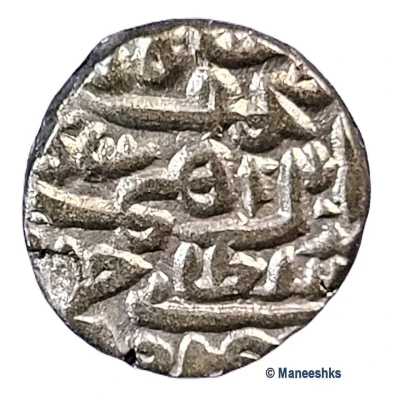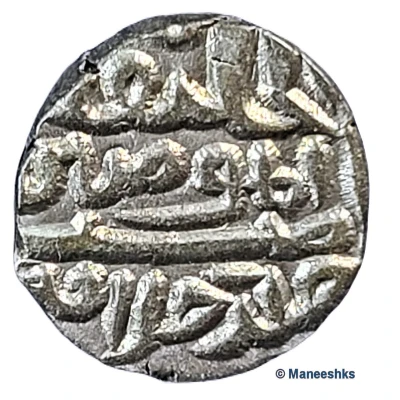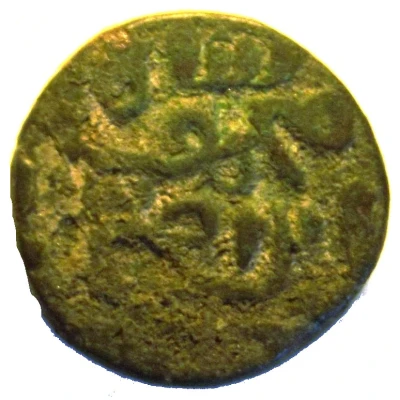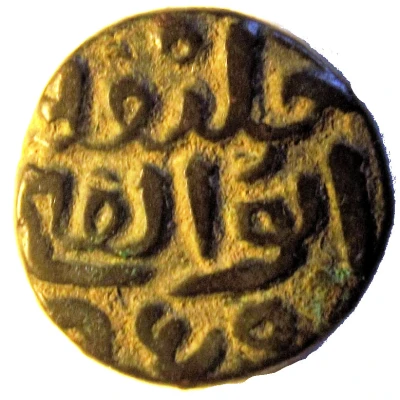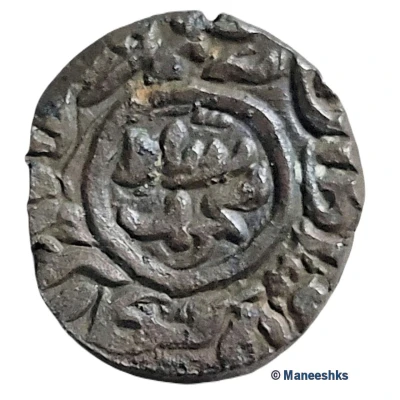
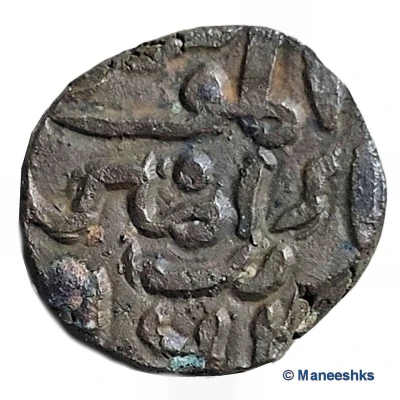

© Maneeshks (CC BY-NC)
Double Falus - Nasir al-Din Mahmud Shah
| Copper | 9.5 g | 18 mm |
| Issuer | Sultanate of Jaunpur (Indian Sultanates) |
|---|---|
| Type | Standard circulation coin |
| Years | 844-862 (1440-1458) |
| Calendar | Islamic (Hijri) |
| Value | Double Falus |
| Currency | Tanka (1394-1479) |
| Composition | Copper |
| Weight | 9.5 g |
| Diameter | 18 mm |
| Thickness | 5.35 mm |
| Shape | Round (irregular, Weight varies 9.5-9.7g and dia too) |
| Technique | Hammered |
| Orientation | Variable alignment ↺ |
| Demonetized | Yes |
| Updated | 2024-10-05 |
| Numista | N#369506 |
|---|---|
| Rarity index | 95% |
Reverse
Na'ib amir al-mu'minin
Script: Arabic
Edge
Plain
Comment
The Jaunpur Sultanate (Persian: سلطنت جونپور) was a Persianate Muslim kingdom in northern India between 1394 and 1479 CE, ruled by the Sharqi dynasty. It was founded in 1394 CE by Khwajah-i-Jahan Malik Sarwar, an eunuch slave and former wazir of Sultan Nasiruddin Muhammad Shah IV Tughluq, amidst the disintegration of the Delhi Sultanate's Tughlaq dynasty. Centred in Jaunpur (in modern day state of Uttar Pradesh), the Sultanate extended authority over Awadh and a large part of the Ganges-Yamuna Doab. It reached its greatest height under the rule of Sultan Ibrahim Shah, who also vastly contributed to the development of Islamic education in the Sultanate.Nasir al-Din Mahmud Shah was the Sultan of Jaunpur spanning the years 1440 to 1456 CE (AH 844-861). He included the name of his father, Ibrahim Shah, in his coins .
Interesting fact
One interesting fact about the Double Falus coin from the Sultanate of Jaunpur is that it features a unique blend of Islamic and Hindu architectural styles on its reverse side. The coin's design includes a depiction of a mosque with a central dome and minarets, surrounded by a Hindu temple with a shikhara (tower) and a gopuram (gateway). This blending of architectural styles reflects the cultural diversity and religious syncretism that characterized the Indian Sultanates during the 15th century.
